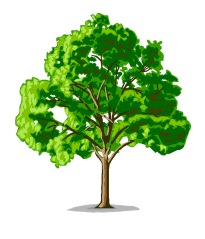Or search by topic
Number and algebra
Geometry and measure
Probability and statistics
Working mathematically
Advanced mathematics
For younger learners
How Tall?



- Problem
- Getting Started
- Student Solutions
- Teachers' Resources
How Tall?

Here is part of the conversation between a group of children as they discuss a tall tree nearby:
"I wonder how tall it is?" says Linus.
"I think we could find out ," replies Raj.
"It could be difficult as it's very high," says Toby.
I wonder how they each went about finding out the height of the tree?
I wonder how YOU would find out how tall a large tree in your surroundings is?
Why do this problem?
Possible approach
Give them plenty of time to plan what they would do and then ask some pairs to explain their proposed methods to the whole group. At this stage, it is important to allow a substantial length of time for discussion. What do the children think the advantages and disadvantages of the different approaches are? Invite pairs to decide on a method that they think is the "best" and encourage explanations as to why. It will be interesting to note those who opt for someone else's method rather than pursuing their own.
It may be appropriate for you (or them) to find a suitable tree in the school grounds for them to carry out their plans practically. It is possible that difficulties might arise as they try out their chosen approach so watch out for the ways in which different pupils overcome any challenges.
It would be very beneficial to have a final plenary following on from the practical experimentation. How will the group judge how well their method worked? This would also be a chance for the class to discuss whether they would use a different method if given a similar challenge on a future occasion.
Key questions
What do you think about what (so-and-so) said?
Do you see any ways of improving their method?
If you were asked to do something similar again what way do you think you would try?
Possible extension
Possible support
You may also like
All Change
There are three versions of this challenge. The idea is to change the colour of all the spots on the grid. Can you do it in fewer throws of the dice?
What's in a Name?
Here's a very elementary code that requires young children to read a table, and look for similarities and differences.

